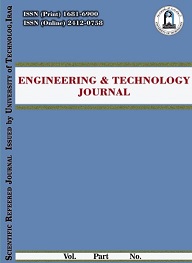Abstract
Since asphalt binder is the most important factor that affects low-temperature
cracking. It is imperative to know the critical cracking temperature in order to identify
susceptible asphalts. The low temperature thermal cracking of asphalt pavements is one of
the main causes for annually repeating expensive highway repairs. To determine the lowtemperature
cracking potential of the asphalt binder, asphalt binder cracking device
(ABCD) was used. The operating principle of ABCD is based on the differential thermal
contraction between the metal ABCD ring and an asphalt binder placed outside the ring,
as the temperature is lowered, the test binder shrinks more rapidly than the ABCD ring
placed inside, which lead to develop thermal stresses, when the thermal stress exceeds the
strength of the binder, the binder specimen cracks. Strain gauges installed inside the ABCD
ring detect the fracture, and the temperature is recorded as the ABCD cracking
temperature. Four groups of local asphalt binders were used for this study; Daurah PG
64-16 (Pen 40-50) both rolling thin film oven (RTFO) and pressure aging vessel (PAV)
aged , Daurah PG 58-22 (pen 85-100) RTFO and PAV aged, Baiji PG 64-16 (pen 40-
50) RTFO and PAV aged, Basrah PG 64-16 (pen 40-50) RTFO and PAV aged. There
is a fairly good agreement between ABCD results and Bending Beam Rheometer
(BBR) in cracking temperature, for asphalt binder PG 64-16 the differences in
cracking temperature about 6 o C, while for asphalt binder PG 58-22 there no
significant differences. All the tests of local asphalt binders are done in the University
of Wisconsin-Madison- USA
cracking. It is imperative to know the critical cracking temperature in order to identify
susceptible asphalts. The low temperature thermal cracking of asphalt pavements is one of
the main causes for annually repeating expensive highway repairs. To determine the lowtemperature
cracking potential of the asphalt binder, asphalt binder cracking device
(ABCD) was used. The operating principle of ABCD is based on the differential thermal
contraction between the metal ABCD ring and an asphalt binder placed outside the ring,
as the temperature is lowered, the test binder shrinks more rapidly than the ABCD ring
placed inside, which lead to develop thermal stresses, when the thermal stress exceeds the
strength of the binder, the binder specimen cracks. Strain gauges installed inside the ABCD
ring detect the fracture, and the temperature is recorded as the ABCD cracking
temperature. Four groups of local asphalt binders were used for this study; Daurah PG
64-16 (Pen 40-50) both rolling thin film oven (RTFO) and pressure aging vessel (PAV)
aged , Daurah PG 58-22 (pen 85-100) RTFO and PAV aged, Baiji PG 64-16 (pen 40-
50) RTFO and PAV aged, Basrah PG 64-16 (pen 40-50) RTFO and PAV aged. There
is a fairly good agreement between ABCD results and Bending Beam Rheometer
(BBR) in cracking temperature, for asphalt binder PG 64-16 the differences in
cracking temperature about 6 o C, while for asphalt binder PG 58-22 there no
significant differences. All the tests of local asphalt binders are done in the University
of Wisconsin-Madison- USA
